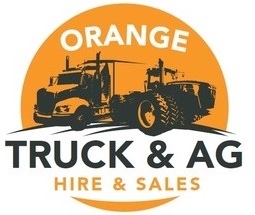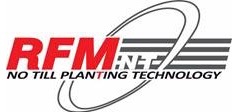Mecardo Analysis - Merino price down cycle
- By: "Farm Tender" News
- Ag Tech News
- Sep 03, 2019
- 532 views
- Share

This article is bought to you by Orange Truck & Ag and RFM No Till
By Andrew Woods | Source: AWEX, RBA, Emerging Markets, ICS
Key points
· Apparel fibre prices are generally down by 30% on mid-2018 level sinus dollar terms, and wool is following this pattern.
· In absolute US dollar terms, the Merino market has been following the pattern set in the 2011 down cycle, pushing lower only last week.
· The different apparel fibre prices are responding to common economic and trade stimuli.
The 17% drop in the average Merino micron price in August ranked ninth on the monthly price falls during the past 70 years. In USD terms it was a larger fall (23%) and ranked seventh. While the speed of the price fall surprised, the direction did not. This article looks to put the current market in a wider context beyond the price falls of August.
Figure 1 shows prices for acrylic, polyester staple, viscose and cotton from early 2018 to August. The prices are in US dollar terms. There is quite a difference between the fibre prices with cotton and viscose around twice the polyester staple price, and acrylic higher again. Since around mid-2018, all the fibre prices have trended lower.
Ad - Used Machinery buying opportunities at Orange Truck & Ag. We also rent - Ad
Ad - RFM No Till is revolutionary Planting Technology - Purchase now or defer your payment and save. RFM No Till is a DelayPay supplier - Ad
In Figure 2, June 2018 has been selected as the base month with the prices for the fibres indexed to that month (June 2018 prices equal 100%). The 19.5 MPG in US dollar terms has also been added. The prices are looked at in USD terms as we are interested in the trends as the buy side of the market would predominantly see them. The August fibre prices range from 68% of the June 2018 price (19.5 MPG) to 76% (polyester staple). The fibre prices are clustered around the 70% level, which means prices have fallen by around 30% in the past year. Note the 19.5 MPG, while the lowest, fits in with the general price fall. Figure 2 shows that the current 19.5 MPG is roughly in line with apparel fibre price falls generally. They are responding to common stimuli of weaker economies in the major developed nations, a weaker Chinese economy and trade issues between the USA and China.


The greasy wool market has been in this position quite recently. Figure 3 compares the 19.5 MPG from mid-2018 to last week (2018 cycle) to the 19.5 MPG from mid-2011 to August 2012 (2011 cycle) in US dollar terms. The current down cycle has had a similar shape in terms of timing and price moves to the 2011 down cycle, overshooting only in the past week.

Each price cycle is different, with the 2011 cycle driven by an extraordinary cotton market. The 2018 cycle has been notable for a big under supply of Merino wool in Australia, which persists. This had caused the Merino price to outperform the other fibres but this out performance cracked in August, and it looks as though we are back with the pack.
What does this mean?
The fall in wool prices during August was severe, but wool had been outperforming the general apparel fibre markets due to substantial and persistent under supply. It appears that the boost to price given by under supply has been overwhelmed by issues on the demand side (economic growth and trade). Apparel fibre prices are down generally by 30% on mid-2018 levels, so the recent fall in greasy wool prices looks to be catch-up with the other fibres. As usual wool prices will track the general pattern set by the apparel fibres as a group.
Ad - Used Machinery buying opportunities at Orange Truck & Ag. We also rent - Ad
Ad - RFM No Till is revolutionary Planting Technology - Purchase now or defer your payment and save. RFM No Till is a DelayPay supplier - Ad












Share Ag News Via